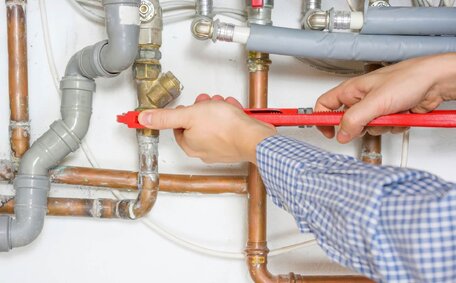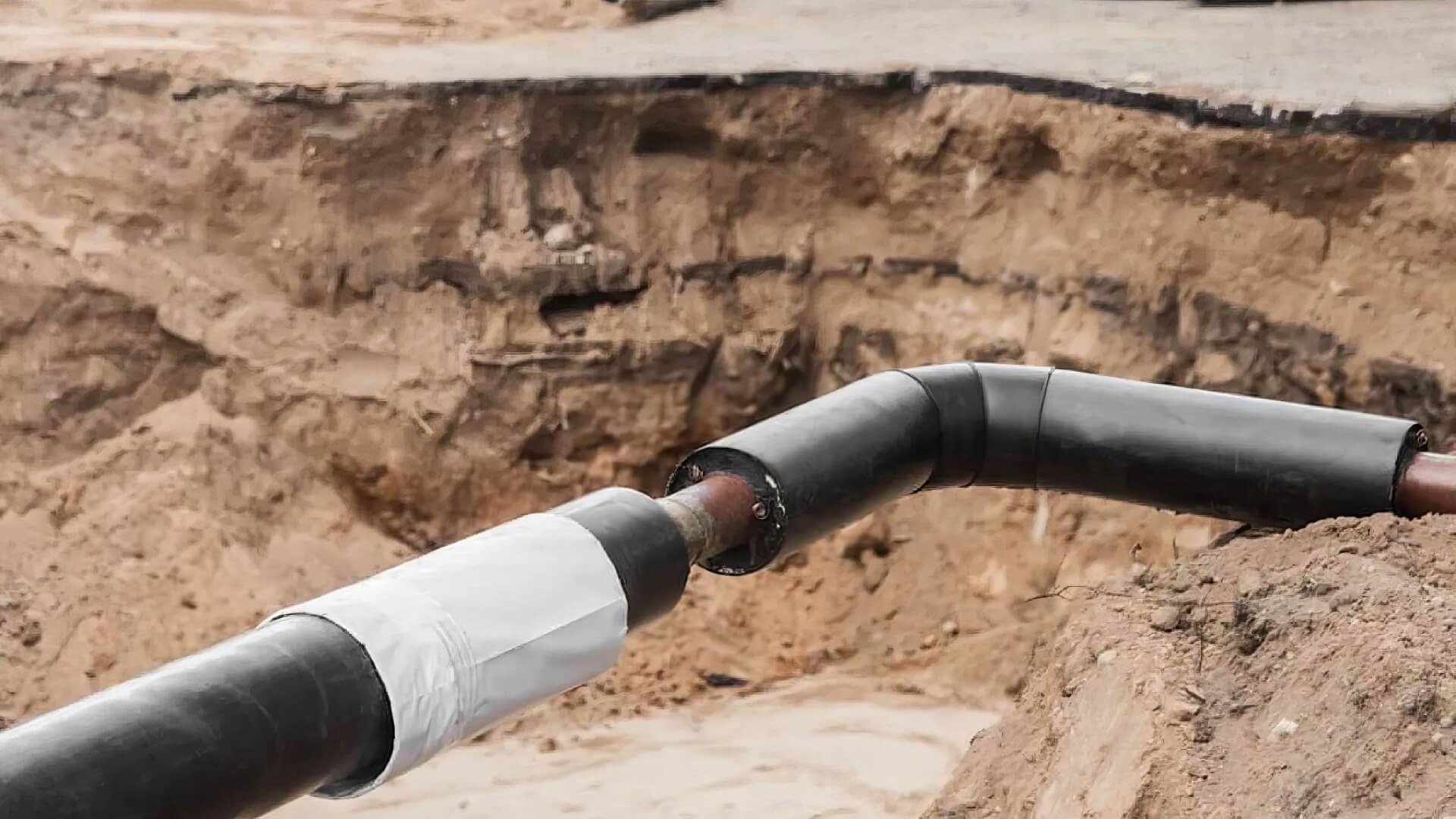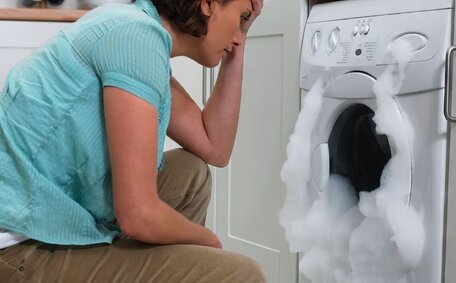
What’s involved in upgrading your gas meter?
Upgrading your gas meter is a simple process completed by qualified technicians. It involves disconnecting your gas supply for 15 minutes to swap the meter. Contact us today for a quote.
Read MoreElectric appliances, as well as gas units, have come a long way in terms of innovation and safety over the past century. In the early 20th century, gas appliances lacked essential safety features like flame failure devices or auto shut-off valves. Frequent gas leaks resulting in fires and explosions were common.
Key milestones that improved gas appliance safety include:
Contemporary gas appliances are equipped with advanced materials, precision engineering, and intelligent sensors, forming multiple safety redundancies to prevent hazardous incidents. For example, stoves now come with sealed burners to contain spills.
Residents moving into new or established Victorian homes with outdated gas appliances, especially those seeking high-quality, efficient electric and gas hot water systems, should consider upgrading or annually reviewing their current models to meet modern safety standards. Replacing faulty rubber hoses, fittings and valves can also prevent catastrophic failures or leaks. Consult your local licenced gas fitter if in doubt about the safety of your gas appliances.
The modern new gas stove has seen remarkable innovation in recent years, showcasing enhanced performance, efficiency, and cutting-edge design features.
Modern gas hot stoves now utilise sealed burners and precise temperature controls for faster, more consistent cooking. Many models boast reduced grid heights, cutting down cooking time, while retaining spill protection. Low profile trivets and burners maximise pan contact for superior heat conduction.
These sophisticated designs, built for gas-efficient cooking and paired with gas-electric alternatives, can save 20-30% in kitchen prep time. They excel in efficiency for cooking hot water, with some models achieving over 55% cooking efficiency - markedly higher than previous generations.
Exciting pilot programmes are pioneering dual fuel options, blending hydrogen natural gas and biomethane, as renewable options for stoves. Prototype stoves blend hydrogen and biomethane to support net zero emissions goals, while preserving the responsive culinary performance valued by gas users, often surpassing electric counterparts.
As gas networks gradually transition toward renewable gas blends, The potential exists for gas stoves to become fully sustainable home appliances, positively impacting year energy bills in coming years. With intelligent temperature sensors and sealed burners slashing waste, they can cook meals far more efficiently than outdated models still in many Australian homes.
Modern gas systems for water heating and space heating, including heat pumps, offer major improvements in energy efficiency, smart controls and lower emissions compared to traditional models. Key innovations include:
Adopting efficient heat pump hot water systems can result in significant energy bill savings for new constructions and home system upgrades alike. These systems, including those used for heating hot water with pump hot water technology, also contribute to emissions reductions by slashing carbon emissions by over 50% thanks to renewable gas compatibility and energy-optimised components, impacting energy bills per year positively.
Government initiatives, which might require planning permit, can subsidise the installation of progressive smart systems for heating cooling that are customised to fit your home’s layout.
With programmable comfort settings and options for integrating bottled gas outdoor heaters, plus the ready adaptation for futuristic green gas applications, cutting-edge reverse cycle heating systems deliver intelligent warmth with a minimal carbon footprint.
Renewable gases like green hydrogen and biomethane are emerging as sustainable alternatives to fossil gas in Energy Networks Australia’s energy dynamics and could affect year energy dynamics. This transition follows a clear gas substitution roadmap, being driven by both the new government policy and the adoption within government buildings as an industry initiative.
Australia has established an objective that 10% of innovative gas inputs like renewable gas, known for lower gas emissions, to be integrated into supply networks by 2030. Potentially rising over 50% by 2050. This will drastically reduce emissions from gas use as renewable blends produce little or no greenhouse gases when burned.
Under strategies by the Victorian government, the gas industry hopes to meet 25% of the east coast’s gas demand via green hydrogen by 2050. Trials are underway, like Jemena testing a 5% hydrogen/natural gas blend in NSW gas pipes. Regulations are also being updated to support 100% hydrogen networks by mid-2020s.
Incentives such as the $1.6 million Victorian Hydrogen Investment Programme aim to hasten the development of hydrogen production, harmonising with the move towards renewable energy sources and all electric home environments. Grants are also promoting biomethane projects that convert landfill waste methane into usable renewable gas.
Households will reap benefits from renewable gas networks which can help reduce energy costs and emissions. Appliances like gas heaters and stoves will transition to run on decarbonised gas seamlessly, thus improving home energy consumption. This innovation is vital for sustainability while retaining the reliability of gas energy.
Blends of hydrogen biomethane and natural gas present a promising solution to decarbonise gas use as they can directly replace natural gas in appliances and pipelines while eliminating harmful emissions. When burned, hydrogen only produces water vapour without any carbon dioxide or pollutants.
Pilot programmes by gas networks like Jemena and ATCO are underway to safely blends hydrogen with traditional gas supplies. Starting with blends under 10%, this will gradually transition networks to run fully on hydrogen produced via renewables-powered electrolysis.
Challenges remain, but it is relatively easy to scale up affordable hydrogen production and modify end appliances to suit pure hydrogen. However industry roadmaps envision 10% renewable gas nationwide by 2030, potentially rising to over 50% clean gas by 2050.
Government assistance like the $70 million NSW Hydrogen Strategy and National Hydrogen Roadmap helps enable industry and councils to improve indoor air quality by switching to hydrogen gas. Financial incentives are also encouraging homes and businesses to upgrade gas appliances to hydrogen-ready models in preparation for this transition.
With falling renewable hydrogen costs and progress on transforming energy into gas, distribution, storage and standards - the framework is taking shape for Australia’s gas networks to cost-effectively decarbonise over the coming years and decades.
It is important to recognize that without proper maintenance or adequate exhaust ventilation, gas appliances can negatively affect health and the environment. Key issues include:
Thankfully there are ways homeowners can mitigate these impacts:
We need to exercise proper precautions, ensuring gas appliances can be used safely and sustainably in the interim as networks slowly decarbonise over the coming years. But regular servicing of both gas and electrical appliances is key to prevent indoor air or environmental issues.
Switching from traditional gas cooktops to modern induction stoves enhances efficiency, reducing reliance on fossil gas and moving towards an all-electric home.
With its resource efficiency and clean operation, induction uses electromagnetic energy to directly warm cookware, bypassing the cooktop surface. This enables up to 90% cooking efficiency compared to 40-55% for gas stoves. Faster boiling, more precise temperature control and easier cleaning are additional benefits over gas.
Electricity savings from induction stoves are comparable to solar PV systems, offering cost-effective solutions that outweigh their initial installation investment over time. Smart features like auto-off when cookware is removed further optimise efficiency.
It also proves that electricity can eliminate gas combustion emissions inside homes and the associated leaks contributing to climate change. However, electric stoves, particularly induction cooktops, require appropriate cookware as they only work with ferrous metal pots and pans. And gas may still be preferred over electric ovens for wok cooking or achieving extremely high heat.
With induction technology advancing rapidly - improved power levels, smart controls and costs coming down - it presents a compelling emissions-free alternative to replacing gas cooktops in most homes if the cooking flexibility tradeoffs are acceptable.
The future looks bright for new technology advancements in gas appliance designs, with benefits accruing year on year as we move towards more sustainable, efficient and intelligent home solutions.
Predictions by the Australian Energy Market Operator, citing innovations such as heat pump technologies, indicate renewable gases will constitute over 10% of network supplies by 2030, potentially exceeding 50% by 2050. This will transform gas appliances to run on zero-emissions fuels like hydrogen and biomethane.
The rise of smart gas appliances is on the horizon, with connected stoves, gas hot water systems, and heaters that facilitate remote monitoring, control refinement and firmware updates akin to smart devices.
Gas network providers are working to establish more efficient gas connections, exploring technology to seamlessly track appliance performance and customise gas blends for optimal efficiency.Gas networks plan to reduce residential gas consumption per capita by 15% by 2030, achieving much more than just a modest reduction.
Progressive materials and manufacturing technologies will continue to transform burner, valve, and piping designs, diminishing gas dependency and enhancing appliance safety, reliability, and longevity.
While the future balance between gas and electric solutions for households is unclear, technologies are rapidly evolving to deliver smart, high-efficiency appliances compatible with renewable fuels.
Homeowners need not sacrifice sustainability when weighing the climate impact of their gas systems, as the latest heating innovations offer sustainable routes to net zero emissions without hindering cooking or heating effectiveness.
Upgrading your gas meter is a simple process completed by qualified technicians. It involves disconnecting your gas supply for 15 minutes to swap the meter. Contact us today for a quote.
Read MoreWe use only the most durable, long-lasting and eco-friendly pipe relining materials such as PVC and epoxy resin to repair pipes without excavation.
Read MoreChemical drain cleaners contain toxic chemicals like sulfuric acid and sodium hydroxide that can damage pipes, disrupt septic systems, and harm humans if inhaled or make contact with skin. Avoid chemical drain cleaners and call Mortdale Plumbing at [phone] for safe, eco-friendly drain cleaning.
Read MoreMortdale, 2223 NSW
We will call back as soon as possible.




